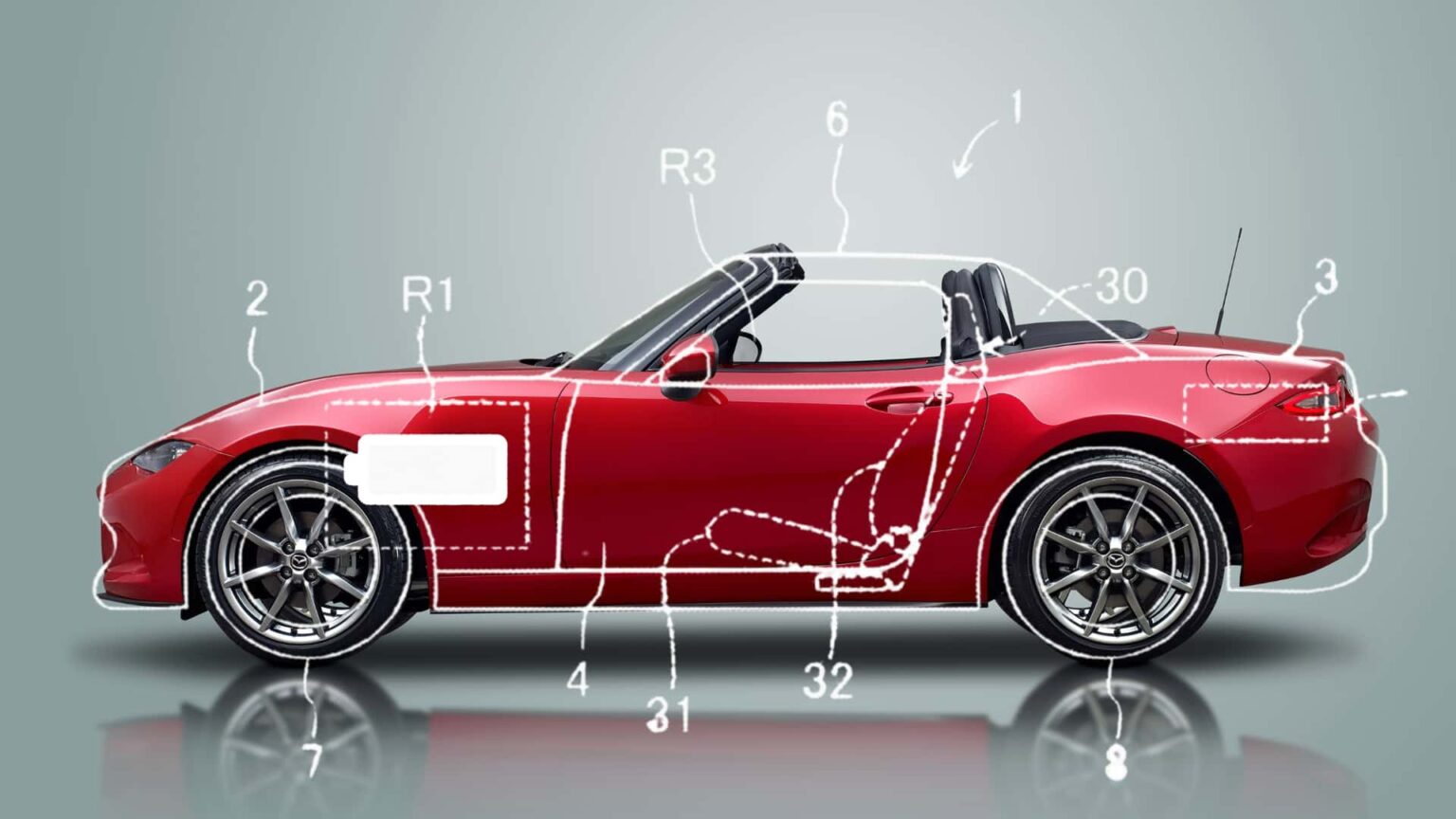The current-generation Mazda Miata has been around the block a few times. The ND arrived 10 years ago, but it’s aged well. The next version will be gas-powered, according to the automaker. But if the world goes electric-only, Mazda has a plan for the world’s greatest roadster.
Case-in-point is this Mazda patent, filed in October 2024 but only published earlier in April. It’s simply titled “Electric Automobile,” but drawings contained within sure resemble a Miata. It’s mentioned as being a design that could work in a sedan or other vehicle types, but the description and drawings certainly focus on a small sports car.
Diving into all the patent-speak, Mazda’s intention becomes immediately clear: position the battery and electric motor in such a manner as to create ideal weight distribution without suffering the deleterious effects of inertia. That’s what makes this design different, because let’s face it—an F-150 Lightning has a perfect 50/50 weight distribution. Finding that balance isn’t difficult on an EV platform with a big battery pack spanning the entire floor. But it doesn’t mean you don’t feel all that weight when you throw it into a corner.
Photo by: US Patent and Trademark Office
Mazda’s patent doesn’t use a big battery in a skateboard design. Instead, it proposes multiple cells installed in the middle of the car, where you’d normally have a transmission tunnel and drive shaft. According to the patent, “since the battery is installed in the tunnel portion, the gravity center of the vehicle can be close to the center of the vehicle, thereby reducing the yaw moment of inertia more.”
This keeps the mass centrally located, but it doesn’t stop there. A single electric motor is also mounted into the tunnel, connecting via a short drive shaft to a rear differential. Per the patent, the principal is the same as the battery placement. “Herein, since the motor overlaps at least part of the back portion of the seat in the side view, the motor comes to be closer to the central portion, in the longitudinal direction, of the vehicle. Thereby, the yaw moment of inertia can be reduced further.”
The design also allows space for additional battery packs strategically placed further out from the center. The patent shows smaller battery packs mounted behind each seat. There’s also a battery mounted ahead of the passenger seat, which serves to offset the weight of the driver. Mazda is taking this balance thing very seriously.
Photo by: US Patent and Trademark Office
If this design does point to the Miata’s future, it’s likely years away. Mazda has already stated it didn’t want an electric MX-5 until something could be done about weight. Preserving the Miata’s nimble nature is important, but lighter battery designs mounted as this patent describes could be a solution.
For now, however, it’s all just theory.
Source:
US Patent and Trademark Office via AutoGuide
Read the full article here


